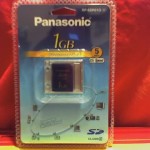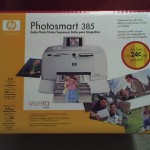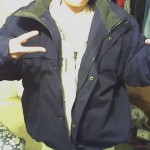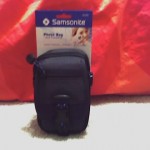Classification of Cardiff and Miller’s work has been elusive. Granted, Cardiff’s art practice has ranged widely from printmaking, performance, multimedia installation, and Internet projects, but the inability to pin a tag on her practice goes beyond the contemporary international art fair syndrome of creating multi-disciplinary installations around the world.
For instance, the Walks and theatre installations are frequently grouped with other works destabilizing space (even within alphabetic placement in the titles) such as NowHere (1996 Museum of Modern Art) and UnEasy Space (2003 Site Santa Fe). Sometimes the audio Walks are classified with other work simply on the basis of walking, as in Walk Ways or with artists Hamish Fulton or Richard Long, even though their interests couldn’t be more different. Other times, the audio walks are discussed in reference to other works using acoustiguides like Sophie Calle or Andrea Fraser, even though Cardiff and Miller’s audio walk could hardly be considered as institutional critique – or really any kind of critique – as Calle and Fraser have been. Under no circumstance, could I imagine Cardiff or Miller working as a maid, or prostituting themselves for the sake of their art or coming into that kind of risky proximity with their viewers.
The confusion also seems to arise from not only a puzzling blank about Cardiff and Miller’s Canadian-ness (and thus their exposure to particular kinds of art and sound while growing up and in art school) but also from the conflicting artist’s statements that their work is really about sound and perception. In fact in interview, Cardiff and Miller have asserted that the principal concern underlying their work are ideas of perception or “how do we know the world through our senses,†yet by the same token their work does not seem particularly connected to some of the other “sensory†artists like Ernesto Neto. This seems strange in face of the overwhelming evidence that the work is not so much about sound, space, technology, as much as those concerns are subordinated to creating a relationship with the viewer. Their apparent goal of connecting with the viewer is rendered transparent by tracing a lineage through an increasingly persuasive mélange of techniques and personas from the early works in 1991 to the audio walks and theater installations in 2001. Furthermore, Cardiff and Miller enter a world of manipulation and maneuvering, relying upon an age-old contract: the masochistic contract which further complicates the relationship of the viewer to the work.
It is not that the world is ignorant that Cardiff and Miller are Canadian, on the contrary, she and Miller are heralded both Canadian to the world, having represented Canada in the 49th Venice Biennale; and lauded by their own countrymen when they won the Millennium Prize. They also have work in virtually every major art institution in Canada. It is popular to cite Cardiff’s formative years being spent on a farm in small village in Brussels, Ontario, where her only connection to the outside world was through fiction and media, particularly radio. There is usually mention of Cardiff’s art study in Banff as that is where she created her first trademark audio walk. The puzzling blank I speak of is the inherent sound and art influences that may be uniquely Canadian exposures, what most likely led them to spend the last few years in Germany. Cardiff mentions once in an interview that their work really does come out of lineage of media art in Canada, artists such as Michael Snow, Douglas Back, and Stan Douglas, yet the implications of this have not been explored. In a nutshell, sound and art have had a different trajectory in Canada (and Germany) and while it is beyond the scope of this thesis to survey that history, there are salient points that should be considered.
There is little to no mention of the sound and radio art movement burgeoning in Canada at the same time Cardiff was graduating with her MVA from University of Alberta, or of Glenn Gould, Murray Schaffer’s Tuning of the World, or even the Walter Phillips Galleries part in fostering and supporting, perhaps even leading the Canadian art movement with exhibits, forward thinking curators and publications. Instead, Cardiff and Miller’s works get frequently grouped with other works with whom they share few concerns.
Furthermore, it is often conveyed that Cardiff’s work is surprisingly original or among the first of it’s kind. Granted there is an element of synthesis with the combination of DJ sampling, acoustic-guide format and binaural recording that is novel, but most of her work has a precedent in the sound art culture of Canada itself. Radio has quietly receded to the background with the aggressive pushing of television, however, its legacy still reverberates in the audio art, especially in Canada.
Many of the concerns that arise in Cardiff’s work art are simply a natural progression of the concerns of audio art predecessor: radio, which has played a particularly important role in Canadian (art) history for perhaps the same generalized reason that Cardiff frequently gives in interviews – reliance on media is a function of distance and proximity to the rest of the world. Despite the fact that three-quarters of the Canadian population lives within one hundred miles of the Canada-United States border, the sense of remove is great. Peruse any mainstream U.S. newspaper; there is a dearth of information, reflecting an absolute non-interest in our very large, and mostly quiet next-door neighbor Canada.
The history of radio has revealed two characteristics that are of interest here. For one radio has traditionally been “represented as the substitute for the absent friend on those cold and lonely winter nights, or alternatively, as the (indispensable) ‘family member’ surrounded by adoring siblings, parents and household pets, exuding its ‘warmth’ like a coal fire.â€Â  While this quality may be difficult to recall in today’s era of internet marriage and myspace, even the American perception of radio as lover is captured in moments like in Annie (1982) where Carol Burnett goes to bed clutching her radio and stroking it adoringly as the singer croons (her) a love song. This comedic scene perpetuates a truth about how it feels that a radio might seem to be addressing a listener individually, and not YOU as a part of an anonymous mass.
This goes hand-in-hand with radio’s other quality: “it’s peculiar ability to convince,†which was demonstrated by the “The Panic Broadcast†of 1938, where thousands of people believed that aliens were attacking Earth.
Lastly, it is important to keep in mind that while radio always had the potential for interactive communication via transmission, reception was quickly “subordinated to a model of 1-way distribution and passive reception.†This might be said of Cardiff’s practice as well.
A brief timeline is in order. Cardiff receives her BFA from Queens University in 1982, the same year that the celebrated Canadian pianist Glenn Gould dies. Now whether Cardiff was personally affected by Gould’s recordings are beside the point as his work and ideas were influencing radio and recording across the country at the time. While Gould was traveled the world touring, he retreated to his studio and recorded only albums and radio documentaries after his last performance in 1964. Like Cardiff, he preferred the control the recording studio provided. Gould is particularly known for what he called contrapuntal radio, which is a technique where several voices are speaking at once. This technique was developed during the production of Gould’s radio documentary called The Solitude Trilogy , which would have been aired by Canadian Broadcasting radio during Cardiff’s teenage years. Interestingly, in interview, Gould expressed an idea that later resonates in Cardiff’s own work, “If you want [your audience] to be caught up … the way to do it is to keep all the elements in a state of flux, interplay, nervous agitation… so that one is buoyed aloft by the structure.â€
In 1983 Cardiff graduated with her MVA from University of Alberta. At this time she was still primarily a visual artist working with silkscreen and lithograph prints. It is the same year she meets George Bures Miller through directing and producing a Super-8 Film called The Guardian Angel. This is their first collaboration – for many years they will both maintain separate art practices and clearly demarcate collaborative projects. Interestingly, Miller is the one with the technology background and frequently works on the techie side of future projects. Some of his own exhibitions and concepts begin to haunt the collaborative works, exhibitions such as Conversations and Interrogations and certain salient tendencies, like producing an agitated state in the viewer and an ongoing interest in iconographic sci-fi clichés It is still another four years before Cardiff really begins move away from flat images to developing conceptual projects that begin to take many different forms.
By 1991 Cardiff accepts a residency in summer Photography Program at Banff Centre for the Arts, which is something like Xavier’s School for the Gifted for media artists. The Banff Centre alumnus includes Laurie Anderson, Michael Snow, Nicole Gringras and Micah Lexier. This is the year she will create two prototype works that ultimately lead to her most acclaimed works. Dana Augaitis is the curator of the gallery affiliated with Banff Centre, the Walter Phillips Gallery, which happens to be dedicated to “curatorial innovation with a commitment to emerging forms of art including video and performance.â€
The Walter Phillips Gallery had already put on shows like “As Told To: structures for conversation,†in 1988, which exhibited which were remarkably similar to work Cardiff later created. Notably two of the artists , Micah Lexier and Dan Landers later went on to edit Sound by Artists including selections by John Cage, Douglas Kahn, Christian Marclay, R. Murray Schafer and others who would gain recognition in their field. Many elements of this show are prescient of Cardiff’s later work. To begin with, the show highlights “four artists trained in the visual arts who are sensitive to aural perception.†Cardiff in interview is quite frank about her own aural sensitivity, which she attributes partially to growing up in an exceptionally quiet rural area and also to natural propensity. The curatorial theme behind this show was really about generating conversation about sound in art and its convergence with visual art. Even further, the auditory focus of the show was the conversational mode and the voice.
Around the same time that Cardiff was at the Banff Center there happened to be an exhibition called Broken Music: Artist’s Recordworks with objects collected by Renee Block and Michael Glasmeir, which by chronicling the history of artists working with records, effectively chronicles a populist history of recorded music and sound. Originating in Germany, where incidentally there is also a large interest in sound music today, and where Cardiff and Miller have resided for the last few years, this exhibition traveled around Canada and the Untied States in ~1990 accompanied by an encyclopedic catalog of the history of the record (and hence, noise or music) to date.
Another “audio†influence that Cardiff would have been unable to avoid is R. Murray Schafer’s The Tuning of the World. Along with Luigi Russolo’s The Art of Noises and a few selected writings by John Cage, you would be hard pressed to find any other books on sound more frequently cited in any college syllabus about sound art.
It is no surprise then that the resurgence in texts on sound art comes from Canada, and incidentally are not easy to find in the States except at schools specializing in sound or ethnomusicology, such as Jim Drobnick’s Aural Cultures (2004); Brandon LaBelle’s Site Specific Sound (2004) and Background Noise: a History of Sound Art; and Nicole Gringras’ s:on.
By 1993 Cardiff had exhibited silkscreen and lithographic prints for the last time.
There was growing international focus and clamor for the audio walks during those three years, resulting in a number of catalogs and considerable documentation. Many of the Walks made during this time were extensively documented (complete scripts, audio CD, color photographs, press, etc.) in a comprehensive monograph published in conjunction with Cardiff’s mid-career survey of works and collaborations at P.S. 1 Contemporary Art Center in 2002. The monograph and survey exhibition were organized and curated by then-P.S. 1 Senior Curator Carolyn Christov-Bakargiev. While many walks have been documented in exhibition catalogs and recently in the Walk Book, none existed as long as The Missing Voice (Case Study B), nor have received as much attention.











 The great image that went with the list convinced me that I should post yet another list of
The great image that went with the list convinced me that I should post yet another list of 
